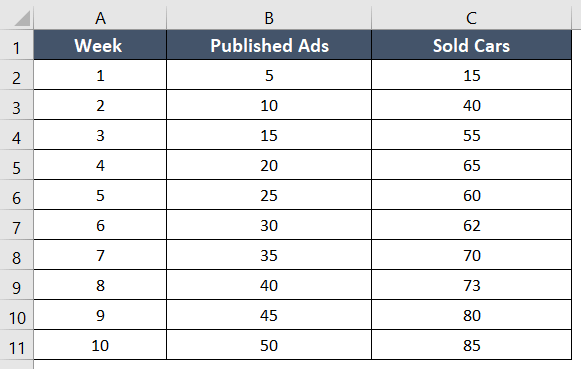Are you looking for a clear explanation of how to create a residual plot in Excel? Are you wondering why this graphical tool is beneficial for analyzing your regression results? In this article, we intend to provide a detailed walk-through of generating a residual plot in Excel, complete with explanations of its benefits, limitations, and insights that can be gained. Join us as we demystify the world of residual plots!

Image: sheetaki.com
We bet many novices in the field of data analysis often ponder over the intricacies of visualizing and assessing how well a regression model fits a dataset. That’s where residual plots step into the spotlight, serving as an insightful tool to uncover patterns and discrepancies between actual and predicted values, enhancing your model’s accuracy and refining your analysis.
Unveiling the Nature of Residual Plots
Excel, a prevalent tool in the data analysis realm, empowers you to effortlessly generate residual plots. These plots enable visualization of the differences between actual data points and estimated values produced by your regression model. By deducing these differences, termed residuals, we gain an understanding of the model’s accuracy and potential shortcomings.
Statisticians can leverage Excel to craft residual plots and render them in a scatterplot format, placing predicted values along the horizontal axis and residuals on the vertical axis. This graphical representation grants valuable insights into how well the model aligns with the underlying data.
Expert Insights: Delving Into Residual Plots
Residual plots stand as indispensable tools for evaluating regression models, offering multifaceted insights into:
- Model Fit Assessment:Scrutinize the extent to which the model conforms to the actual data. A well-fitted model exhibits scattered residuals without any discernible patterns.
- Outlier Identification:Expose data points that deviate significantly from the model’s predictions. Exceptional observations, termed outliers, can be readily spotted as points situated far from the main data cluster.
- Assumptions Validation:Determine whether the model assumptions align with the real-world data. Linear regression, for instance, presumes linearity, homoscedasticity, and independence of residuals.
Cracking the Code: How to Create a Residual Plot in Excel
Embarking on the journey of creating a residual plot in Excel entails a sequence of straightforward steps crafted to make your analytical endeavors smoother than ever:
- Regress Your Data:To initiate the process, regress your data using Excel’s built-in regression tool. Select the ‘Data’ tab, opt for ‘Data Analysis’, and embark on the path of linear regression. Input the relevant data ranges accordingly.
- Retrieve Residuals:Once the regression is complete, right-click on any cell within the output table and select ‘Show Residuals’. Doing so materializes a column christened ‘Residuals’ brimming with the differences between actual and predicted values.
- Plot the Residuals:Navigate to the ‘Insert’ tab and opt for ‘Scatter Plot’ under the ‘Charts’ section. Select the ‘Residuals’ column as the vertical axis and the ‘Predicted Values’ column as the horizontal axis.
- Inspect the Residual Plot:Examine the residual plot with an analytical eye, deciphering patterns, scrutinizing outliers, and validating the underlying assumptions of your model. The insights gleaned will guide you in refining your model and amplifying its accuracy.

Image: excelgraduate.com
Transforming Residual Plots: Optimizing Insights
Seasoned data analysts, in their pursuit of analytical prowess, deploy a variety of techniques to extract the maximum value from residual plots:
- Histogram of Residuals:Create a histogram of the residuals to analyze their distribution. A bell-shaped curve suggests normality, a core assumption of linear regression models.
- Quantile-Quantile Plot:Plot the residuals against their expected quantiles in a normal distribution. A linear pattern indicates alignment with normality, while deviations hint at non-normality.
- Partial Residual Plots:Segmenting data into subgroups allows for the creation of partial residual plots, revealing how well the model fits different subsets of the data.
- Cook’s Distance Plot:Identify influential points in your data by visualizing Cook’s distance, which gauges the impact of each data point on the regression results.
Frequently Asked Questions About Residual Plots
Q: How can I interpret a residual plot?
A: Assess the randomness of the residuals’ distribution, identify patterns or outliers, and verify whether the assumptions of your regression model hold true.
Q: What are some patterns to look for in a residual plot?
A: Be on the lookout for patterns like curvature, which suggests non-linearity, or heteroscedasticity, characterized by unequal residuals across the predicted values’ range.
Q: How can I improve the fit of my regression model based on a residual plot?
A: Identify outliers, transform variables, or consider alternative models if patterns or violations of assumptions are observed in the residual plot.
How To Make A Residual Plot In Excel
Conclusion: Unlock the Power of Residual Plots
Harnessing the potential of residual plots is paramount in refining your regression models and sharpening your analytical prowess. By visually articulating the discrepancies between actual and predicted values, these plots unveil patterns, pinpoint outliers, and facilitate rigorous model evaluation. Leveraging Excel’s user-friendly interface, creating and interpreting residual plots is made accessible, empowering you to make more informed decisions and attain greater analytical precision.
Now, we pose a question to you, dear reader: did this article ignite a spark of curiosity within you, urging you to dive deeper into the captivating world of residual plots? If so, we encourage you to continue exploring, leveraging your newfound knowledge to enhance your analytical capabilities. Let us know if you have any further questions, and we will be delighted to guide you on this exciting data analysis journey.